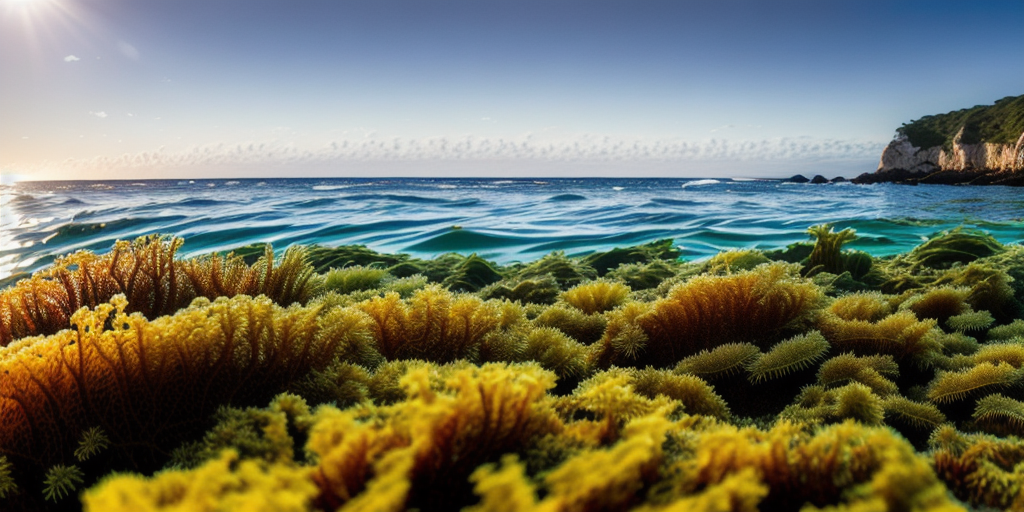
Thousands of tons of invasive seaweed ‘overwhelming’ Spanish beaches
How did your country report this? Share your view in the comments.
Diverging Reports Breakdown
Thousands of tons of invasive seaweed ‘overwhelming’ Spanish beaches
Since May, the local authority in Cádiz has removed 1,200 tonnes of the alga Rugulopteryx okamurae from La Caleta, the city’s most popular beach. It is thought to arrive in the ballast tanks of ships which pass through the Suez canal and then discharge their tanks in the Mediterranean. The alga attaches itself to rocks and other surfaces and is also free-floating, wiping out native species of seaweed. It has no predators in the region and its capacity to reproduce both sexually and asexually and to absorb toxins makes it virtually impossible to eradicate, experts say. The government in Andalucía launched a four-part plan to confront the crisis based on research, monitoring and education, and which includes options for recycling the seaweed, but experts say it can only be part of the solution.
Since May, the local authority in Cádiz has removed 1,200 tonnes of the alga Rugulopteryx okamurae from La Caleta, the city’s most popular beach, including 78 tonnes in a single day.
“We’re completely overwhelmed. This is an environmental catastrophe,” said José Carlos Teruel, responsible for Cádiz city council’s beaches. “Whenever the wind is westerly, we know we’re in for another wave of seaweed.”
As with many other invasive marine species, the alga is thought to arrive in the ballast tanks of ships which pass through the Suez canal and then discharge their tanks in the Mediterranean.
In little more than a decade the species has colonised the strait of Gibraltar, much of Spain’s southern coast, the Canary Islands, the Azores, and, farther north, the Cantabrian sea and the Basque Country.
“It was first spotted 10 years ago in Ceuta, Spain’s north African enclave, by a researcher from Málaga university, but the authorities are always too slow to react,” said Juan José Vergara, a professor of biology at the University of Cádiz.
“In the first phase of an invasion such as this it can be controlled. It’s like catching cancer early on before it spreads,” Vergara said, adding that what washes ashore is a fraction of what is underwater.
“But now the scale of it makes it impossible to control. In other seaweed invasions we’ve seen things revert to normal after a period of 10-15 years but many scientists say they’ve never seen an invasion on this scale.”
The seaweed is having a major impact on the local economy, firstly on tourism in Cádiz and nearby Tarifa, a town popular with windsurfers, and on fishing because it traps fishers’ nets and lines and also sucks oxygen out of the water. Then there’s the cost to the taxpayer of disposing of it.
Perhaps most worrying is its impact on biodiversity. On the beach at La Caleta, the seaweed has driven out many indigenous plants. It is unclear whether the damage is temporary or irreversible.
The alga attaches itself to rocks and other surfaces and is also free-floating, wiping out native species of seaweed. It has no predators in the region and its capacity to reproduce both sexually and asexually and to absorb toxins makes it virtually impossible to eradicate, experts say.
At present the seaweed is dumped in landfill sites. Vergara said a local business that recycles seaweed into drinks containers or to use as fuel and fertiliser has sought permission to use Rulopteryx okamuraeas as a biomass to produce energy.
However, Spain’s law on invasive species prohibits their commercial exploitation unless they pose a threat to health and safety or to further their eradication, a caveat that would seem to apply to Rulopteryx okamuraeas.
This week the government in Andalucía launched a four-part plan to confront the crisis based on research, monitoring and education, and which includes options for recycling the seaweed.
To use it as biomass the regional government will have to negotiate with Spain’s environment ministry but Vergara said that even if an agreement is reached, it can only be part of the solution.
“It’s an interesting idea but I doubt it will be able to eradicate or even significantly diminish the intensity of the invasion when hundreds of thousands of tonnes can wash up on a single beach,” he said.
